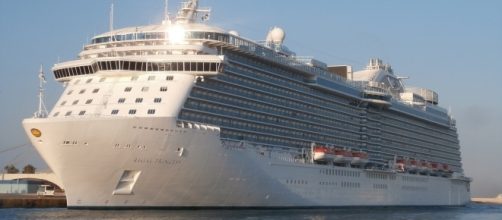Earlier this month, Carnival Corporation gained plenty of attention in the tech world when they announced the launch of a wearable device that will let cruise passengers do everything from opening their room to having the bartender know automatically what they want to drink. But behind the splashy cruise ship news lies an important evolution in wearable technology, the use of Bluetooth and sensors for the future, and what all of this might mean to an even bigger powerhouse in the travel and entertainment industry: Walt Disney Company.
Cruise company launches a wearable medallion
Carnival’s news highlights a growing trend in the leisure business as more companies seek to link customer dependence on their mobile phones with making the travel experience easier. The technology they announced this month packs near field (NFC) and Bluetooth-enabled technologies into a lightweight, waterproof medallion that passengers can wear as a necklace or watch. Through Carnival’s on-board software network, passengers can access content via phone or tablet about the voyage based on their current location on the ship, or use the device to pay for services during the cruise.
It’s also a way that ship personnel keep track of their passengers. The medallion sends a constant stream of location data that allows, for example, housekeepers to know when travelers are out of their staterooms so they can be cleaned.
The whole system works though 75 miles of cable and over 7,000 sensors spread throughout one Carnival ship.
The hardware network was designed by the engineering firm Nytec and guided by Carnival’s John Padgett, the cruise line’s chief experience and innovation officer. Padgett may not be a familiar name to many in the tech world, but he has gained a reputation for pushing the boundaries of technology in the quest for a better customer experience. His participation in this latest project for Carnival is an important back story because Padgett was instrumental in the first such deployment of a wearable device that is still in use today at Walt Disney World.
Disney faces new competition
With much fanfare in 2013, Disney launched the MagicBand, an RFID-equipped wrist wearable that provides Disney World visitors in Orlando with sensor-driven room access, park tickets and Fast Pass processing (to avoid those legendary theme-park lines).
It can also be tied to the wearer’s credit card and used for payment on the Disney World property. The MagicBand and MyMagic+ system cost an estimated $1 billion to implement.
But while Disney deserves credit for being one of the first mass-scale adopters of wearable tech, they are about to be swamped by new advances in the field. This month’s medallion by Carnival stands out in contrast because the new system designed by Disney’s former project leader offers two-way interaction and quick learning of a customer’s habits, whereas the MagicBand is simply a one-way device that communicates with chip readers.
And rival Universal Orlando is on track to launch its own wearable tech, called TapuTapu, later this year.
The park’s new waterproof bracelet includes interactive features that will trigger fountains to activate and notify the wearer when it’s time to get in line for an attraction. There has been recent speculation that Disney is going to retool their wrist wearable platform, but so far the only change has been the release of MagicBand 2 in December. The latest version is a removable puck-like “face” that can be inserted into other wearable Disney merchandise.
Padgett’s move to Carnival and the subsequent release of new technology for the passenger experience are the latest chapter in what will undoubtedly be an ongoing saga of one-upmanship between major players in the travel and entertainment world. The first Carnival cruise using the new medallion technology will set sail this coming November, a maiden voyage that will be watched closely by the keepers of the Magic Kingdom.

